A scout car for the Army
In the early 30's, the British army was mechanizing its units around the concept of armoured divisions, and one of the vehicles required to equip the new formations was a small 4x4 scout car for general liaison and reconnaissance duties, requested in 1938 by a British War Office specification and a call to manufacturers. Three prototypes from Morris, BSA and Alvis were presented in August-September 1938 and began a testing campaign. All three were relatively similar, with a rear engine, roughly the same size and layout, with four independent suspended wheels. The initial Morris prototype was quickly eliminated because of insufficient speed. The Alvis model (called "Dingo", an Australian wild dog) had a higher center of gravity, thus some lateral stability problems in sharp turns, but was fast off-road (up to 50 mph/80 km/h).The BSA Cycles Ltd prototype was ready later in September, and performed particularly well, performing a 16,000 km (10,000 mi) test course with almost no notable issues. In the meantime, the War Office requested better protection and an armoured roof. This required a return to the factories, where the suspensions were strengthened and a more powerful engine was fitted. Presented once again, it was chosen, over the Alvis, for a first order of 172 units in May 1939, as the "Car, Scout, Mark I". In turn, BSA turned to one of its companies, Daimler, to polish the design for production. Although Alvis lost the competition, the prototype name eventually became popular and stuck to the model. The Daimler Dingo was one of the finest armoured cars ever produced in Great Britain.
Design
The Dingo was a small two-man armoured car, relatively low and wide enough to have the required stability for fast off-road rides. Its initial armor was thin, just enough to stand against infantry ordnance. At the Army's request, it was thickened, reaching 30 mm (1.18 in) on the front nose and glacis. Deflecting armoured sloped panels were welded all around the central framework. The front driving compartment had four openings hatches. The engine was the regular Daimler 6-cyl 2.5 l 55 hp (41 kW), fed by a 300 l (79.25 gal) gasoline reserve (two tanks), which gave an incredible long range for its small size.The Transmission consisted of a pre-selector gearbox, fluid flywheel, five gears forward and five gears reverse, allowing steering with all four wheels. This feature gave the Dingo a very tight turning radius, only 7 m (23 ft), but the system was tricky to master for inexperienced drivers, so a more conventional design of front-wheel steering only was chosen on the Mk.II. The very design of the transmission was optimised for compactness, centrally positioned, with the propshafts running on either sides.
During the course of wartime production, it appeared that the flat bottom plate, which allowed the crossing of uneven ground, was highly vulnerable to mines. The rubber tires were of the run-flat semi-solid type, so no spares were carried, but their toughness was compensated by the massive vertical coil springs, to give a smooth ride (about 8 in/20.3 cm of vertical deflection).
There was a swiveling seat next to the driver, for a machine-gun servant/radio operator, equipped with a N°19 wireless radio set. The base armament was a removable cal. 0.303 (7.7 mm) Bren gun, with a dozen spare magazines. This armament could be swapped over for a heavier Boys antitank rifle (cal 0.55 in/14 mm). This gave the vehicle, which was fast and well-protected, with a good engine and low profile, a real advantage against all sorts of light vehicles, making it excellently suited for reconnaissance and liaison missions.
Evolution from the Mk.I to the Mk.III
The whole series is remarkably homogeneous. It was produced from 1939 to 1945, and remained virtually unaltered.The Mark I had a flexible sliding roof and the all-wheel steering. It was difficult to handle for inexperienced drivers.
The Mark IA was a sub-variant equipped with a folding roof.
The Mark IB had a reverse cooling air flow and new armoured grilles for the radiator, allowing better ventilation. The bulk of these vehicles served in the Libyan desert.
The Mark II had a revised steering system, using only the front wheels. The lighting equipment was modernized, altogether with the Mark IB modification range.
The Mark III was the final version, coming in 1944 with a waterproofed ignition system and no roof at all.
The Daimler Dingo in action
The Dingo was first used by the BEF (British Expeditionary Force), with the 1st armoured Division and 4th Northumberland Fusilers, in April-May 1940. The main users were small reconnaissance units from the cavalry corps , which consisted generally of two Dingoes and two Daimler armoured cars for support. The Dingoes served on every front alongside many Allies armies (Australian, New Zealand, even Polish and Free French Forces), and were so proficient that no replacement was sought before 1952, when the Daimler Ferret appeared. They served as reconnaissance vehicles, but also as mobile observation post and with Royal Engineer units, used for locating mine fields and bridging positions, and HQ liaison vehicles. They were generally highly praised by officers of all ranks, which tried to have them as their personal liaison and command vehicle.Fast, reliable, nippy and quiet, this vehicle was probably one of the most successful British AFVs of the war, perfectly suited for its tasks. In the mid-70s the Dingo was still used by Cyprus, Portugal and Sri Lanka, and many were available in official depots, and later army dumps. Now it's a highly praised collector or reenactment vehicle, sometimes reconstructed almost from scratch.
Derivatives and influences
The Daimler armoured car
When the Dingo was only a prototype, Birmingham Small Arms, the designer, thought it had a considerable potential and made an excellent base for the development of an up-armed model, then called a "wheeled light tank". A pilot model was started in April 1939 and, after trials and acceptation, production started in December 1939. It was bigger, wider and taller, with an armoured turret housing a standard 2-pdr (40 mm/1.57 in) QF gun. In all, 2694 would be built until 1945, and these vehicles often cooperated with Dingo\'s in recce missions.The Canadian Ford Lynx
When the demand exceeded the capacity of Daimler, Ford Canada, in Windsor Ontario, begun production of a local derivative. The "Scout Car, Ford Mk.I", also called the "Lynx armoured car". Almost identical, it was one foot taller because of the Ford transmission. The Ford engine was more powerful, but both the transmission and suspension were inferior to the Dingo's. In all, 3255 will be delivered from 1943 to 1945.The Autoblinda Lince
As the Dingo was starring in the desert, the Italians were impressed enough, after capturing one, to devise their own model, the Breda "Lince". It was literally a clone, produced to an extent of 230 to 250 vehicles between 1943-44, also used by the Germans after the Italian capitulation, as the Panzerspähwagen Lince 202(i), performing the same missions.Gallery
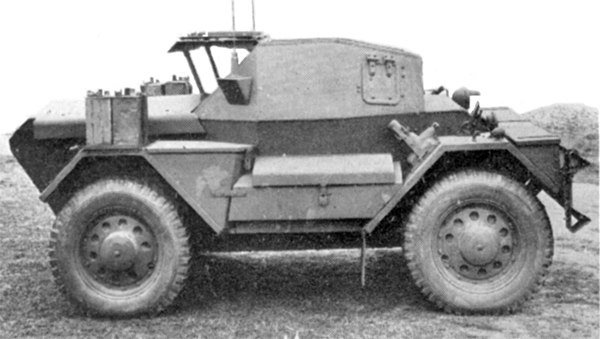
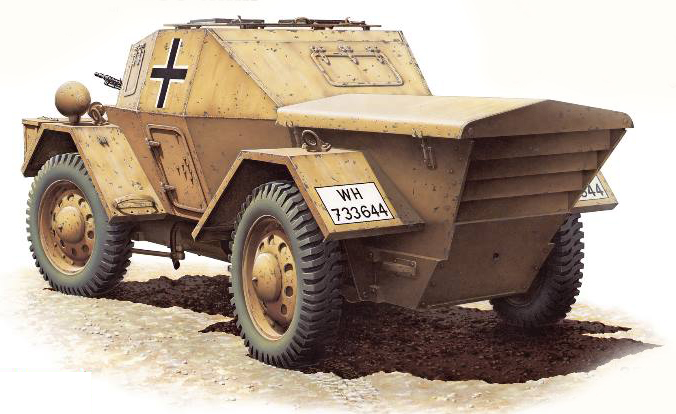
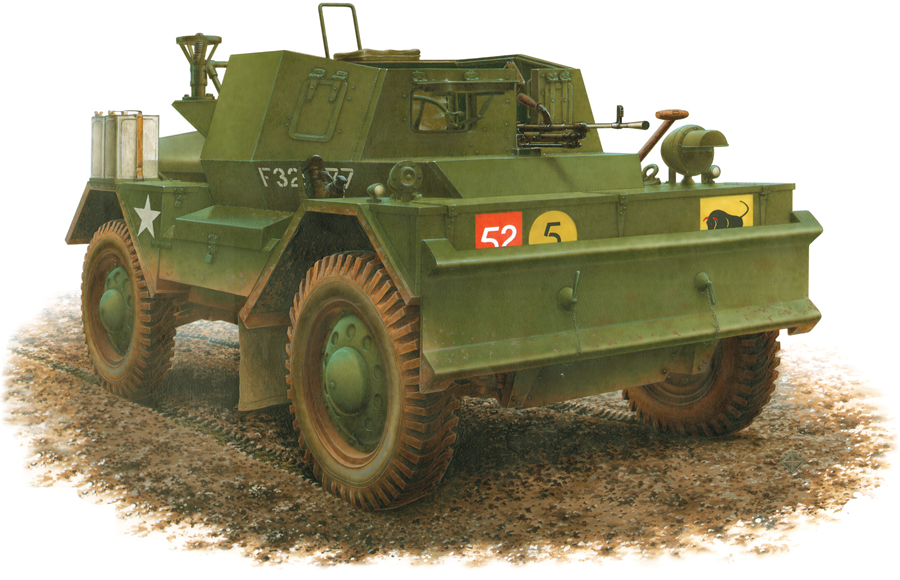
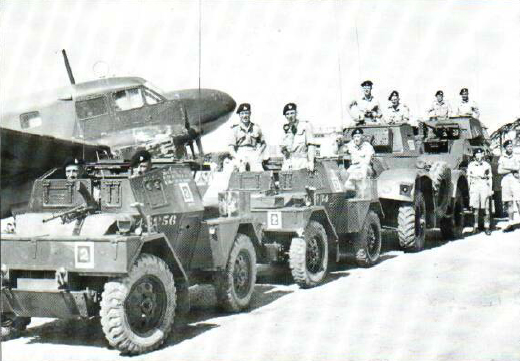
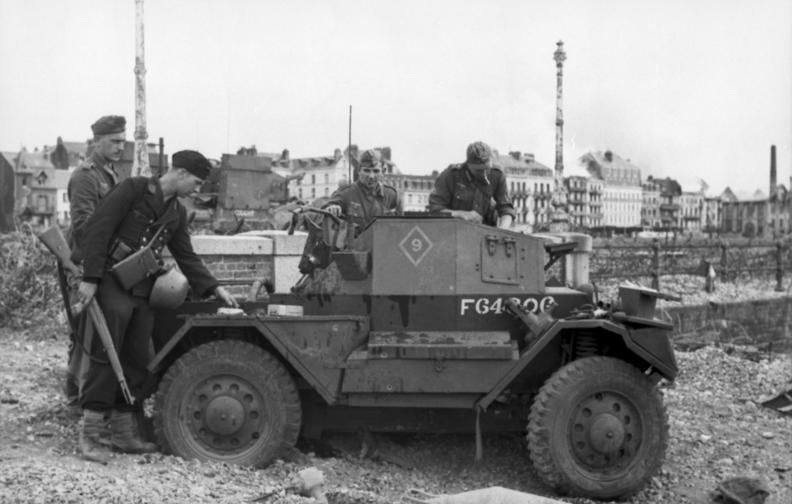
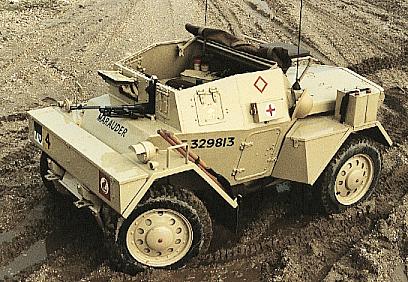
Links about the Daimler Dingo
The Dingo on WikipediaA dedicated website about all WW2 Daimler armoured vehicles
Surviving Daimler Dingoes and Ford Lynx - The Shadocks
Daimler Dingo Mk.III specifications | |
| Dimensions | 3.18x1.71x1.50 m (10.43x5.61x4.92 ft) |
| Total weight, battle ready | 3 tons |
| Crew | 2 (driver, gunner/radio) |
| Propulsion | 2.5 litre 6-cyl Daimler petrol, 55 hp (41 kW), 18.3 hp/ton |
| Suspension | 4x4 independent coil springs |
| Speed (road) | 89 km/h (55 mph) |
| Range | 320 km (200 mi) |
| Armament | 0.303 in (7.7 mm) Bren MG or 0.55 (13.97 mm) in Boys antitank rifle |
| Armor | 12 mm sides to 30 mm front (0.24-0.35 in) |
| Total production | 6626 in 1939-1945 |
.png)
Captured Dingo Mk.I as the Leichter PzKpfw Mk.I 202(e), DAK, Libya, 1941.
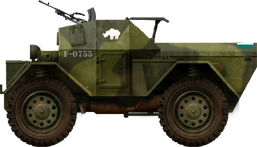
Mk. IA, British Expeditionary Force, 3rd RTR, 1st armoured Division, Holland, summer 1940.
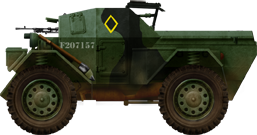
Dingo Mk.IA from the HQ squadron of the 1st Northamptonshire Yeomanry, 20th armoured Brigade, 6th armoured Division, training in Great Britain, 1941.
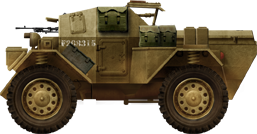
Dingo Mk.IA, Libya, fall 1940.
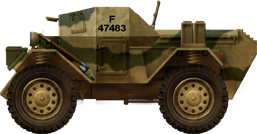
Daimler Dingo Mk.IB, Great Britain, fall 1941.
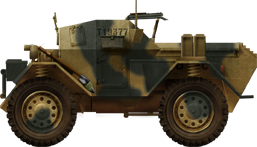
Dingo Mk.II, unknown reconnaissance unit, Western Europe, 1944.
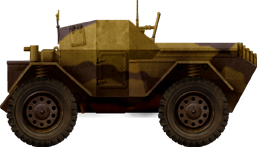
Mk.II, 4th Field Squadron RE, 7th armoured Division, Libya, 1942.
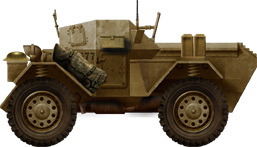
Dingo Mk.II attached to the reconnaissance battalion of the 7th RTR, VIIIth Army, Libya, fall 1942.
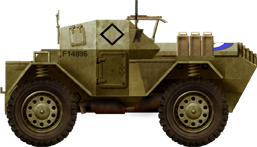
Dingo II, 2nd NZ Division HQ, El Alamein, November 1942.
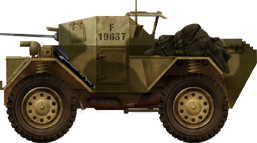
Dingo Mk.II with a Boys AT rifle, 23rd armoured Battalion, 5th RTR, Tunisia, March 1943. (HD illustration)
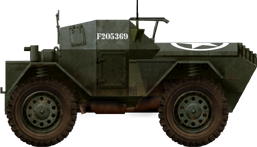
Mk.II, NZAC training center near the Red Sea, 1945.
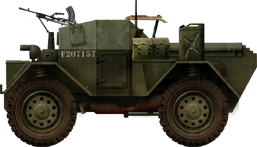
Dingo Mk.II, 11th Hussards, 7th RTR, Holland, winter 1944-45.
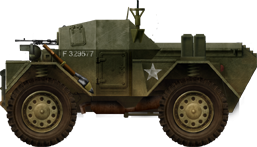
Dingo Mk.III, 11th armoured Division, Holland, winter 1944-45.

WW2 Tanks




























WW2 tanks posters

All Tiger tanks liveries.

Panther liveries and variants

WW2 Armour - All tanks











Tanks aces and single tanks series

Find more there

Museums, Movies, Books & Games
The Tanks and Armor in pop culture
Tanks and armored vehicles in general are only really grasped when seen first person: The mass, the scale, it's all there. Explore also the way tanks were covered in the movie industry, in books and in video games.Movies:
Best tanks movie on warhistoryonline.com
On imdb.com
On bestsimilar.com/
miltours.com
liveabout.com/
watchmojo.com
Video Games:
pcgamesn.com
historyhit.com
levvvel.com
vg247.com/best-tank-games
mmobomb.com/
alienwarearena.com

